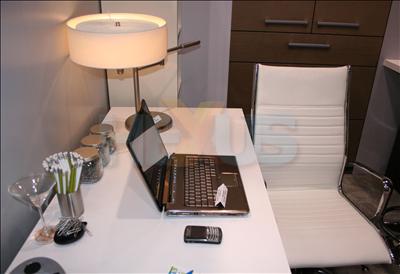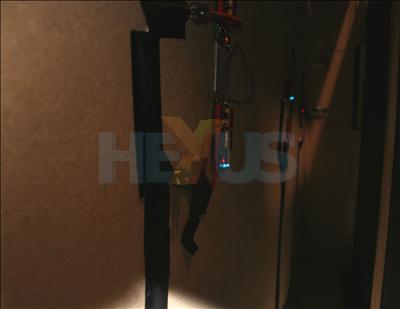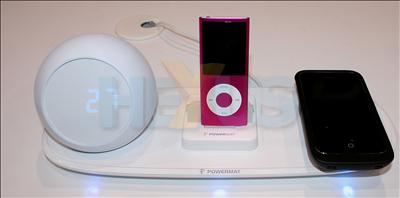This is the future: use your electonics without wires
|
by Nick Haywood
on 12 January 2009, 07:36
Tags:
Powermat
Quick Link: HEXUS.net/qaqob
Add to My Vault:
|
|
What's missing from the above picture because it seems normal enough, right?
The table-lamp, laptop and BlackBerry Curve are being charged but there are no wires in sight.
It's a demonstration by a company called Powermat, which hopes that its method of power-delivery will catch on in a big way.
Using the proven science of electromagnetic induction - where, in this instance, the desk has a built-in layer of copper that, when powered, creates a magnetic field - a device is able to harness the electrical charge created by the hidden copper. RFID tags in the devices dictate how much power should be supplied.
Pragmatically, what it means is that products imbued with Powermat technology and placed over the magnetic field created by the desk will be charged wireless: simply place and charge.
The same principle is shown in the mock-up kitchen, where a multi-purpose blender is charged without traditional wires.
Being electromagnetic, Powermat's technology doesn't suffer from haphazards such as water that afflict conductive charging.
Taking it a step further, the company envisages scenarios where new-build homes are equipped with the necessary gubbins for through-the-wall magnetic charging, meaning no wires on those pesky flat-mounted TVs or lights.
Thinking some more, there's no reason why data cannot be transferred in the same way, too.
The showcase, whilst demonstrated perfectly, is still a little ways off being brought to market, but Powermat will have products out this year, based on the underlying technology.
Here's a mat that serves the same purpose as the built-in copper on the desk and worktops. Without integrating the receiver into the products, the method of delivery is via special sleeves or docks, as shown above.
What's cool about it is the fact that you can do away with multiple chargers and significant number of wires - simply place and charge.
The basic mat will cost around $99 and each sleeve or dock around $30 when released in Q4 2009.
Who knows, BlackBerry might just integrate a transmission receiver into one of its devices in 2010. Cool, cool technology that could be a commercial success, at least in the 'sleeve' form, if pricing is kept keen. Of course, it doesn't do anything that's not already done by wires, but Powermat claims that its tech is far, far more efficient, and that's where the win could be.
Click here for all CES 2009 content.

















